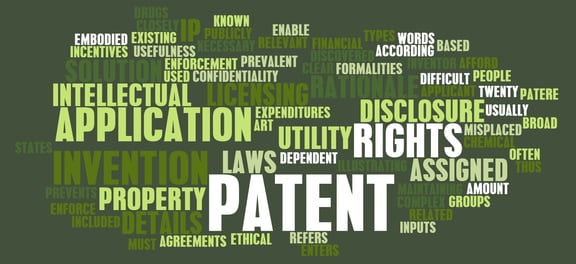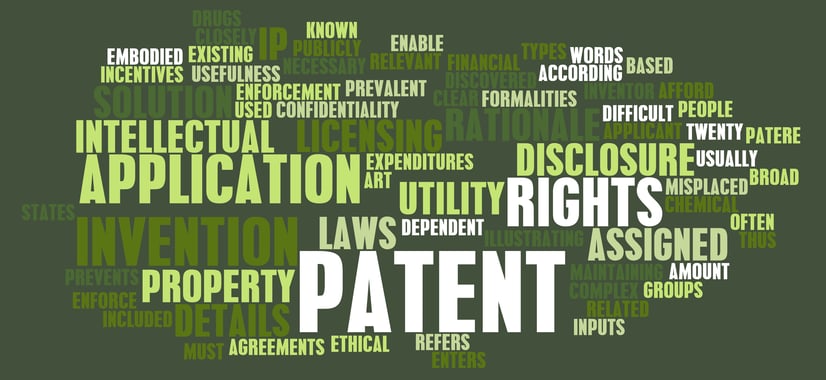
Success in the world of life sciences and medicine, in particular, has never been as closely linked with successful protection of intellectual property than it is today. Discovery of a new effective medicine, device or method of treatment can change the fortunes of a company. That change may not always be positive unless some basic rules are followed regarding protection of intellectual property. Often this means patent protection.
How data is addressed in patent applications
The process of protecting inventions has a legal and formalistic reputation. However, the process by which a patent is obtained is, at least initially, based on a mixture of suspicion and trust in almost equal parts by the patent authorities. Before accepting a patent application, the patent examiner will seriously assess whether the invention is new (novel) and surprising (non–obvious). For instance, if the invention was made public before the patent application was filed, the Examiner will reject the application for a patent. Trust: In contrast, the data relating to the invention, even though it is often unexpected and, in some cases, raises a few eyebrows, is rarely, if ever, questioned as to its accuracy or ownership during Patent Office examination. The obvious exception to this is data that would seem to disprove a basic law of nature, e.g. an inventor who wished to obtain a patent for their new perpetual motion machine, or for a time travel vehicle, might well be asked to bring a working model or prototype to the Patent Office to provide a demonstration.
Assuming with the advice of an excellent patent attorney, you have protected a commercially valuable product by obtaining a registered patent. This important milestone is often not the end of the scrutiny to which your patent application will be subject. In any proceedings where the validity of the patent is examined, everything you submitted to the Patent Office during the course of examination at the patent office is reexamined. A challenge may be initiated in an administrative process before the Patent Office or before a court of law, in a revocation procedure, or as a defense of invalidity by a defendant in a patent infringement case. Procedures of this type are stressful, time-consuming and often expensive but they are often an excellent indication that your invention is recognized as commercially valuable.
During a challenge procedure, nothing is taken on trust. The accuracy of the data disclosed in the patent will often be examined with a fine-tooth comb by people who are intent on showing that the data are inaccurate, plagiarized or even falsified, that the conclusions based on that data rightly belong to someone else, or that they are implausible and perhaps flawed. This is done with the intention of demonstrating that the patent protecting the invention based on this data should never have been granted, or perhaps that it has been obtained dishonestly. If these challenges are successful, then your most profitable product might well face fierce competition years before you expected. Companies have been ruined by successful attacks on the data supporting one of their important patents.
One lesson to learn from the history of patent litigation is that the resilience of your patent depends to a large degree on the accuracy of data. How do you ensure that your patent, which might be your most valuable asset, will emerge unscathed from an onslaught? What steps should you take? First and foremost, it is vital to have systems and processes hardwired into your research, which ensure the generation of data with high levels of quality and integrity, including data verification capabilities. Such a system should be able to identify discrepancies, prioritize patent-worthy results, mitigate potential risks, and enable managers to make well-informed strategic decisions. Having a strategy for how you address the intellectual property of your team or company should be in place before, rather than after, your research is complete.
The Inventor:
By law, a patent cannot be granted to an individual or group based on the work and insight of a different group, without their permission. In the European Patent Office and many others, a patent is owned by the group that first files the application documents. Since 2013, the United States has a similar system, except that its law refers to the first inventor to file. The difference is significant, because if a patent challenger can show that the invention protected by the patent was actually invented by a different individual and not the claimed inventor, then the field is open to show that a different, perhaps later filed application should have received protection.

In the not too distant past, a researcher would have her own physical lab book at her bench, and good laboratory practice would demand that each page included accurate data recorded by hand, signed, dated and countersigned as read and understood, usually by a supervisor. At the conclusion of a project, many research-based institutions would require a written report to be produced, including conclusions based on the findings signed by the person responsible for the research. These lab books and reports were regularly pored through in an attempt to find holes and inconsistencies in the contentions upon which a challenged patent was based. Was the data generated on the claimed date? Was the named inventor actually involved in the research, or was the named inventor actually a supervisor with no inventive input? Were there data from previous attempts that failed before a successful experiment was conducted? Is there any record that the data provided insights and an inventive spark, and that these are attributable to the named inventor?
The physical lab book may be a distant memory for some or even most researchers, as research is now generally conducted in large multidisciplined teams, with many individuals contributing to the discovery of new inventions. The systems that replace those lab books must at least be able to provide the same level of confidence in the accuracy of the data. However, there are greater demands on such a system. Data must often be recorded directly from instruments and processes, or at a minimum accompanied by verified printouts. As inventions are regularly based on collaboration between teams, pooling of data and integrating that data must be seamless, and at the same time, they must be secure and not open to manipulation. The data and reports based on that data may be automatically generated, but it still must be able to be traced to the date of its creation and the individual associated with it and must be capable of being verified in the same way that the lab book was originally countersigned by a supervisor. Given the vast amount of data generated in today’s research, it is perhaps true that a lot of modern inventions would not even be possible without the insights gained through the number crunching and data mining capabilities of such data management integrity systems.
Consult with an expert and make sure your inventions are legally protected before any publication occurs.
Finally, but most importantly, we must address human nature. There are many factors at play. No credible researcher would knowingly present data as their own if it were not theirs; however, ego can be as harmful to the strength and resilience of your patent as dishonesty. The reputation of a researcher in scientific circles is often a function of their published articles; the stock price of a pharmaceutical company can be boosted or plunge into the pits of worthlessness, by, not only the results of a pivotal clinical trial but the timing of the announcement. Potential investors need to be impressed by the results of research in a marketplace for investment money that is very competitive.
For these, and many other, reasons, there is an almost irresistible urge to publish data and results as early as possible. There may be short-term gains in rushing to publish and announce successful results, but the minutes of sweet pleasure gained may become a bitter taste if it destroys any chance of obtaining a patent. However, an organization with a firm IP Strategy and policy in place, which cannot be circumvented even by the highest echelons of the institution, can avoid such a disaster by ensuring that inventions are legally protected before any publication occurs. When devising an IP strategy fit for purpose for your organization, it is crucial to consult a competent intellectual property professional, such as a patent attorney with international expertise.
To learn more about how Labguru ELN will help you protect your IP – Contact us
© Eitan Mehulal Sadot 2018
About David Silver:
Patent Attorney David Silver has more than 30 years of experience in strategic management in the field of intellectual property and in drug research and development, including patent drafting, consulting in the field of pharmaceutics and dosage form development, registration and management of a large-scale patent portfolio, due diligence and patent litigation. Eitan Mehulal Sadot is a leading law firm specializing in all key areas of commercial law. Their vast experience and proven expertise are leveraged by a far-reaching global presence and knowledge of current international business trends and developments.
Read more blog posts:



